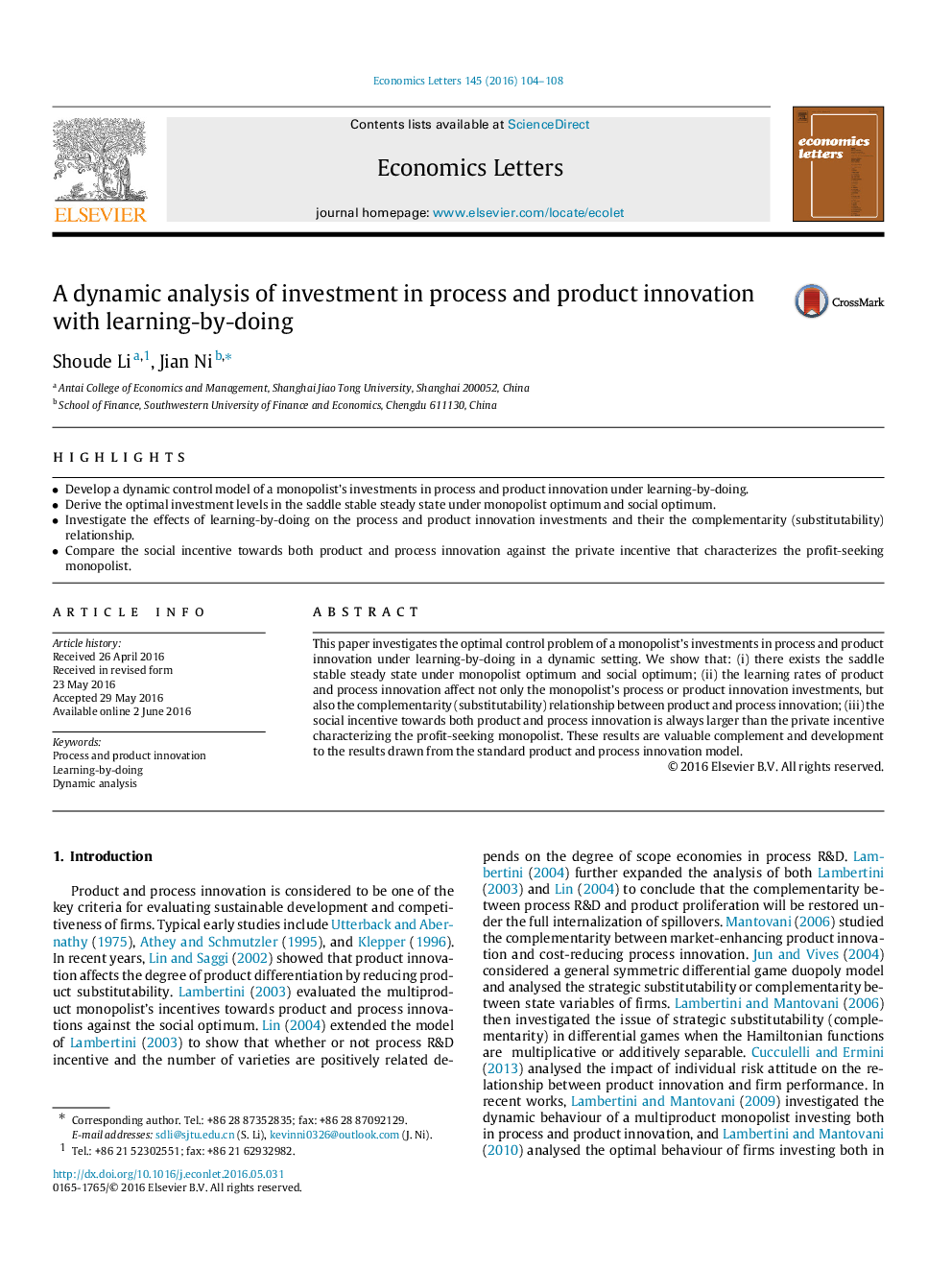| Article ID | Journal | Published Year | Pages | File Type |
|---|---|---|---|---|
| 5058198 | Economics Letters | 2016 | 5 Pages |
â¢Develop a dynamic control model of a monopolist's investments in process and product innovation under learning-by-doing.â¢Derive the optimal investment levels in the saddle stable steady state under monopolist optimum and social optimum.â¢Investigate the effects of learning-by-doing on the process and product innovation investments and their the complementarity (substitutability) relationship.â¢Compare the social incentive towards both product and process innovation against the private incentive that characterizes the profit-seeking monopolist.
This paper investigates the optimal control problem of a monopolist's investments in process and product innovation under learning-by-doing in a dynamic setting. We show that: (i) there exists the saddle stable steady state under monopolist optimum and social optimum; (ii) the learning rates of product and process innovation affect not only the monopolist's process or product innovation investments, but also the complementarity (substitutability) relationship between product and process innovation; (iii) the social incentive towards both product and process innovation is always larger than the private incentive characterizing the profit-seeking monopolist. These results are valuable complement and development to the results drawn from the standard product and process innovation model.
